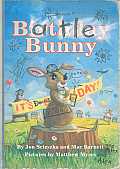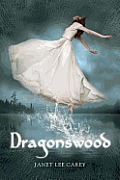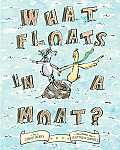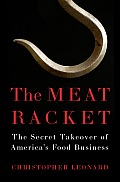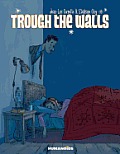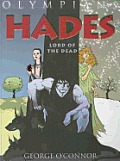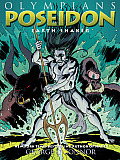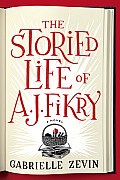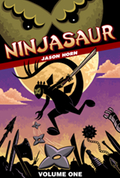Link to this review in the form of a comic strip by geneambaum tagged picture book • humor

Click for the full-sized comic
@bookblurb When Alex gets a boring picture book for a birthday gift, he transforms it into a violent masterpiece.
Link to this review by wally tagged coming of age • fantasy
Tess’ life as a blacksmith’s daughter is filled with fear and abuse. When a witch hunter comes to town she is accused of witchcraft and must flee into the forbidden Dragonswood with her two friends, Meg and Poppy, who she named as witches under torture. All three are rescued from cold and hunger by an enigmatic woodsman, a noble who guards the dragons’ home from humans. Tess and her friends then begin a long journey of healing and magic filled with dragons and the fey.
Why I picked it up: I met the author through another librarian, who put us in touch to discuss Banned Books Week. I’ll be writing a blog post for her this fall. When she told me she had just published this book, I thought it would be a good read.
Why I finished it: Tess’ life with the blacksmith and her mother is thoroughly medieval, and I thought maybe the fey and dragons were imaginary or metaphorical. But no, when it became apparent they were real (at least in the book), it made the whole story more compelling.
It’s perfect for: Jennifer. While this book is a far stretch from those original King Arthur stories, she would love the idea that original Pendragons were of human and dragon ancestry. She would also enjoy seeing Tess grow into her own as a young woman as her fear of her father leads her to discover a own strong will and a true love.
@bookblurb Tess and her friends flee charges of witchcraft but find safety, magic, and healing in the forbidden Dragonswood.
Link to this review by sarahhunt tagged picture book • science
Archie (short for Archimedes) the goat and Skinny the Chicken have to get across a moat with some barrels of buttermilk. Skinny wants to use the drawbridge, but Archie insists, “This is no time for a drawbridge. This is a time for science!” Archie builds some barrel boats and Skinny has to drink a whole lot of buttermilk to test Archie’s guesses about what floats the best: full barrels, empty barrels, or half-full barrels.
Why I picked it up: Skinny’s dashing green scarf and Archie’s armored helmet on the cover.
Why I finished it: The single-minded determination to solve a problem the interesting way instead of the easy way reminded me of a lot of projects I’ve started but not always finished.
It’s perfect for: Young kids who need to know that it’s perfectly fine to fail if you can learn from the process. And it could be the start of a picture book list on the basics of science.
@bookblurb A goat and a chicken figure out what floats best.
Link to this review by flemtastic tagged nonfiction
Tyson Foods, well known for supplying huge amounts of chicken and other meats to industrial clients and fast food restaurants has their production system down to a science. Mathematical models dictate market prices and the amount of supplies like grain, chicks, and cages needed to meet their contracts. Chicks are sent to farmers working on contract to raise and fatten them with feed provided by Tyson. Tyson’s vertical integration — they own every link in the production chain — allows them to rake in obscene profits. While this has lowered the price of chicken and allowed its popularity to explode, it has driven family farms bankrupt and killed the open market over the last thirty years. Farmers who do the work are failing in astounding numbers. (The contracts that are forced on them are predatory, but farmers must sign because there are no competitors and they have debt payments.) Tyson does not care, apparently, because there are always new farmers to take their place. Some farmers who complained claim they were then supplied with unusable feed and sick chicks, or that they simply had their contracts terminated.
This vertical integration and contract farming has been copied by Tyson’s business rivals. It is referred to as “chickenization,” and has now spread into the hog and cattle industries. Tyson is one of four companies that now control about sixty percent of the poultry market and another four companies that control over eighty percent of the beef market nationwide. Competition is at an all-time low, and any legislation in the last decade meant to curb corporate power has wilted on the vine.
Why I picked it up: I am a life-long vegetarian who has never eaten meat voluntarily. (Find me at a conference, and I’ll tell you about when I was a teenager in Germany and my exchange parents forced me to eat a steak.) I’m not militant about veggies, but I thought this exposé of Tyson Foods (and industrial farming) would be informative.
Why I finished it: I have seen the Tyson logo on many products, though the company prefers to stay in the background, supplying generic meat on contract to fast food chains like McDonald’s. I enjoyed hearing about the realities of hog farming, the disturbing details about waste lagoons, antibiotic use, how piglets are transported, and the huge, air-conditioned barns with slatted metal floors that allow waste removal which are required at huge, modern hog farms.
Leonard tells the story of Tyson’s growth through personal stories of farmers who worked for Tyson and were willing to risk retribution by talking to him. One farmer told of taking out a ten-year loan after being promised three consecutive three-year contracts by Tyson. After he complained about Tyson’s tournament system, which rewards productive farmers with higher prices and punishes less productive farmers with lower prices, he was told his contract was being cancelled and that he would not be offered another.
Readalikes: I had to read Upton Sinclair’s classic expose of the meatpacking industry, The Jungle, back in college. While we don’t necessarily have the same cleanliness issues in meat production that we used to, this is also an exposé. Both books also have a focus on the well-being of the employees who produce the meat that we put on our tables.
@bookblurb Tyson’s ownership of every link of the chicken supply chain allows them to rake in obscene profits.
Link to this review by darcy tagged picture book
There are many kinds of hard working trucks out on the road.
Why I picked it up: It’s been years since I learned my alphabet, but I’m still drawn to alphabet books. I love words and vocabulary, and alphabet books are a little like small dictionaries that (often) rhyme.
Why I finished it: It was fun to see how letters were worked into the art. A bunch of t’s became a tow truck’s chain, a piles of d’s were the refuse from a dump truck, and a bucket of h’s were ready to feed the animals from the horse truck.
It’s perfect for: Victor. With the help of his grandfather, he once cleaned out the truck and tractor section of my library when he decided to test the hundred item check out limit. He will especially love the vacuum truck because it sucks up the v’s on the street.
@bookblurb An alphabet book that plays on children’s love of trucks to trick them into learning to read.
Link to this review by geneambaum tagged literary • science fiction • graphic novel
Slice-of-life short stories about people with the ability to walk through walls and other things. No superheroes.
Why I picked it up: French comic, so I had to pick it up. The colors looked wonderful, so I bought it.
Why I finished it: In the first story, Christian uses his power to walk into the bathroom while his girlfriend is using the toilet, much to her annoyance, and despite the fact that she locked the door. He then borrows the toilet paper and embeds it halfway into the wall so that she can’t use it. It’s the most brilliant use of superpowers since Iceman learned to make those slides he cruises around on.
It’s perfect for: Diane, who would like the way Odile uses her power to slip away from a male friend who’s coming on too strong, though she’d also be creeped out how a man uses his power to spy on the innocent young woman he’s trying to court.
@bookblurb Slice-of-life short stories about people with the ability to walk through walls.
Link to this review by geneambaum tagged graphic novel • fantasy
Hades
A tour of the (mostly dismal) Greek afterlife courtesy of the ruler of the underworld. The main focus is Hades kidnapping Demeter’s daughter, Persephone, because he wants to marry her.
Poseidon
The Greek god of the sea is a dark, brooding guy who doesn’t have much fun, and his kids are monstrous. (They include the cyclops in the Odyssey, Pegasus, and Medusa). He always seems to be losing contests to other gods, though his son Theseus is quite a success story.
Why I picked them up: Edith Hamilton’s Mythology was one of my favorite books as a kid.
Why I finished them: Hades opens with a black page that reads, “This is what happens to you when you die.” It’s a show stopper. The following pages show the dead crossing the river Styx, moving past Cerberus, and arriving at Erebus, which is crowded with the dead. Creepy. Then there’s a brief tour of those receiving special punishments in the underworld, like Ixion, Tityus, and Sisyphus.
Poseidon has an even darker tone than Hades, which I didn’t expect. My favorite moment is when O’Conner glosses over the fact that Daedalus made a cow suit in which Minos’ queen “visited” a beautiful bull Poseidon sent to the island. (This visit resulted in her giving birth to the Minotaur. Kids will ignore this detail and adults will laugh.) And thanks to O’Connor’s interpretation of Poseidon’s early life in his father’s belly, I finally get why Poseidon likes horses so much.
They’re perfect for: Marin, my feminist friend, who is probably irritated that Persephone has little say in her fate in most versions of her myth, because in this one she takes charge and gets what she wants.
@bookblurb A tour of the underworld with the guy who kidnapped Persephone and a look at the dark, brooding god of the sea.
Link to this review by flemtastic tagged literary
A.J. Fikry runs a bookstore in a tony island town that is accessible only by ferry. When Amelia, a new publisher’s rep, stops by to tell him about the new season’s books, A.J. barely gives her the time of day. Ever since his wife died, the bookstore has been everything to him, but even that is going away as sales decline. Then a customer abandons a baby in the bookstore; A.J.’s well-ordered life changes in an instant, and Amelia, who has known him for years at that point, begins to see a different side of him.
Why I picked it up: I liked Zevin’s inventive YA series Birthright, about a world like ours where chocolate and coffee are banned, and I wanted to see what this adult novel was like.
Why I finished it: Books are a large part of my life. Watching a community via the slices of lives that happen in the bookstore was really fun. For example, the police chief stops by to check on a legal issue, gets hooked by a book, and starts up a men’s book club that persists for years. The physical store was the one constant in the book and the town — even the main characters who work there change and grow.
It’s perfect for: My neighbor, Jonathan. He has also dealt with the challenges of adoption, and his nickname in our neighborhood is “The Curmudgeon.” A.J., like Jonathan, has a gruff exterior, but the proverbial heart of gold. And Jonathan is always the neighbor who helps me tie a tarp over my woodpile in a storm without complaining, so I owe him something.
@bookblurb Sales are declining, but AJ loves his bookstore. His well-ordered life changes when a baby is abandoned there.
Link to this review by snow tagged science fiction • graphic novel • fantasy • humor
Ninjasaur fights evil in all forms, whether they are science nerds messing with forces they don’t understand, ghosts who might also be time-travelling mystics, and even canned tomato monsters who walk about on tentacles. Ninjasaur takes them all on for honor, and so that they’ll go away and let him watch more infomercials.
Why I picked it up: I heard Horn speak on a panel about kids’ comics at Heroes Con in June. When he mentioned that he did a webcomic about a ninja dinosaur, I had to get a copy of his first book.
Why I finished it: Because of delightful bits of snarky dialogue, such as:
Ninjasaur: “Nazi Ninja? That’s the stupidest thing I’ve ever heard of.”
Ninjazi: “I must lend you a mirror sometime.”
I found myself laughing out loud numerous times, thanks to Ninjasaur’s dry wit and the ridiculousness of Horn’s stories. There is plenty of poking fun at adventure comic tropes: Ninjasaur shops at a 90s comic book weapons store — “Now I’m ready to be an antihero!”; Ninjasaur has a mysterious past that his sensei never revealed to him; shadowy figures watch Ninjasaur and discuss his destiny as the one who will “bring balance back to the temporal race”; and so on.
The stark black-and-white art pops off the page, and its clean lines give a professionally-published feel to this self-published title. (The webcomic is in full-color and presented in a slightly different story order than the comics in this paperback.) Horn’s characters have a Saturday morning cartoon look to them, but that doesn’t mean he sacrifices detail. A rhino-ninja is one particularly good example of his skill at blending realism with cartoon silliness.
It’s perfect for: Fans of Axe Cop by Malachai and Ethan Nicolle who like the off-beat humor of the Nicolle brothers, but want a story that is a (tiny) bit less scattered.
@bookblurb A ninja dinosaur fights science nerds, time travelling ghost mystics, and canned tomato monsters.
